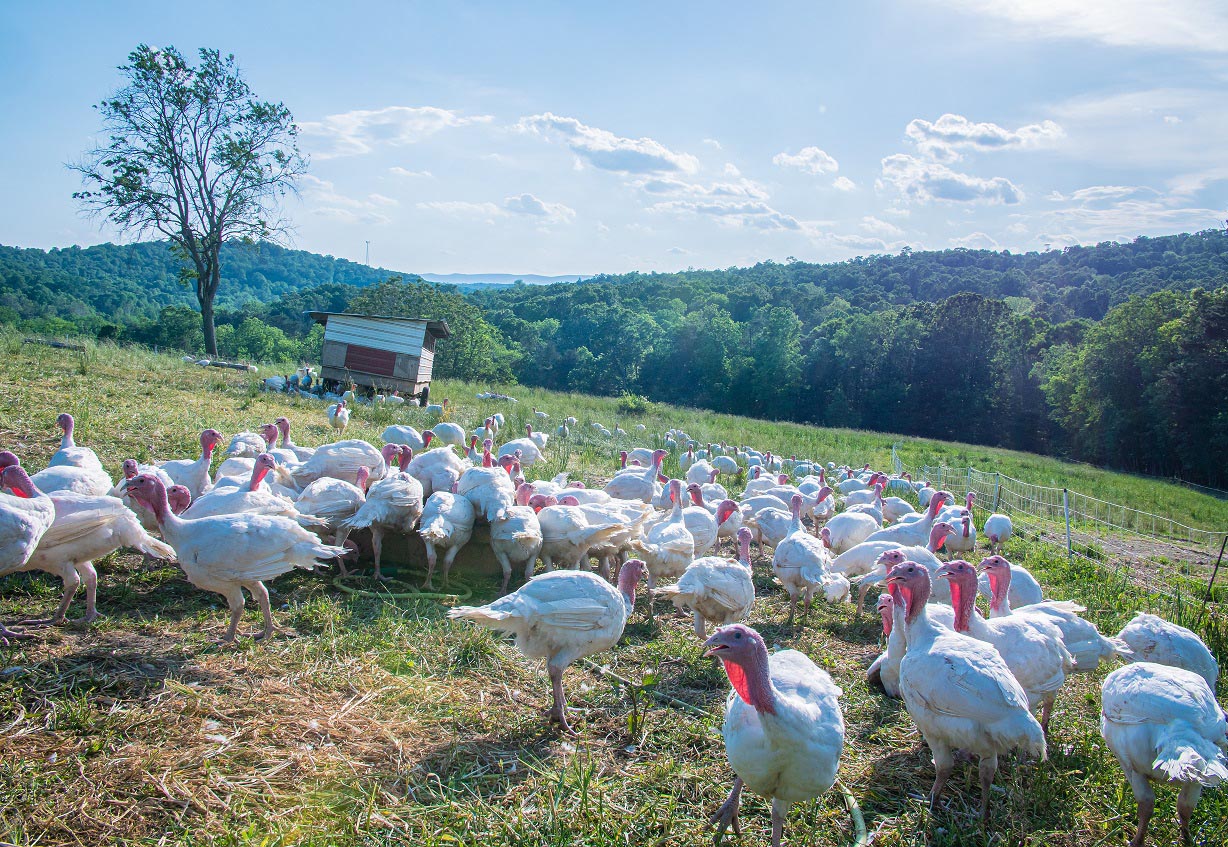
12 Terms You Need to Know to Understand Meat Labels
November 17, 2020 by 4P Foods
In addition to farm-fresh produce, 4P Foods also sources sustainable, ethical protein options. Good meat is Good Food. But what is “good meat?” We hope this post helps explain the values behind our meats, the labels and terms associated with them, and the stories they tell.
What follows are the most common terms and labels you will see describing our meat and seafood products. Most of these terms are used to describe how animals were raised: how they were fed, treated, and kept, and some refer to how the meat was prepared or processed.
RAISED SUSTAINABLY AND HUMANELY
The following terms and labels all describe how the farm animals our meat products come from were treated. At 4P Foods, we support farmers who provide their animals with healthy diets, tend them with care, and operate their farms with regard to their impact on the environment.
GRASS-FED
The term “grass-fed” is typically used to describe beef, bison, and sometimes dairy products. All beef in the U.S. begins its life as grass-fed, but conventionally-raised beef cattle are sent to concentrated animal feeding operations (CAFOs) and fed grains for fast growth. Research demonstrates that prolonged high-grain diets can cause stress and health problems in ruminant animals. From happy cows and lush pastures, we believe that healthy food comes from healthy animals.
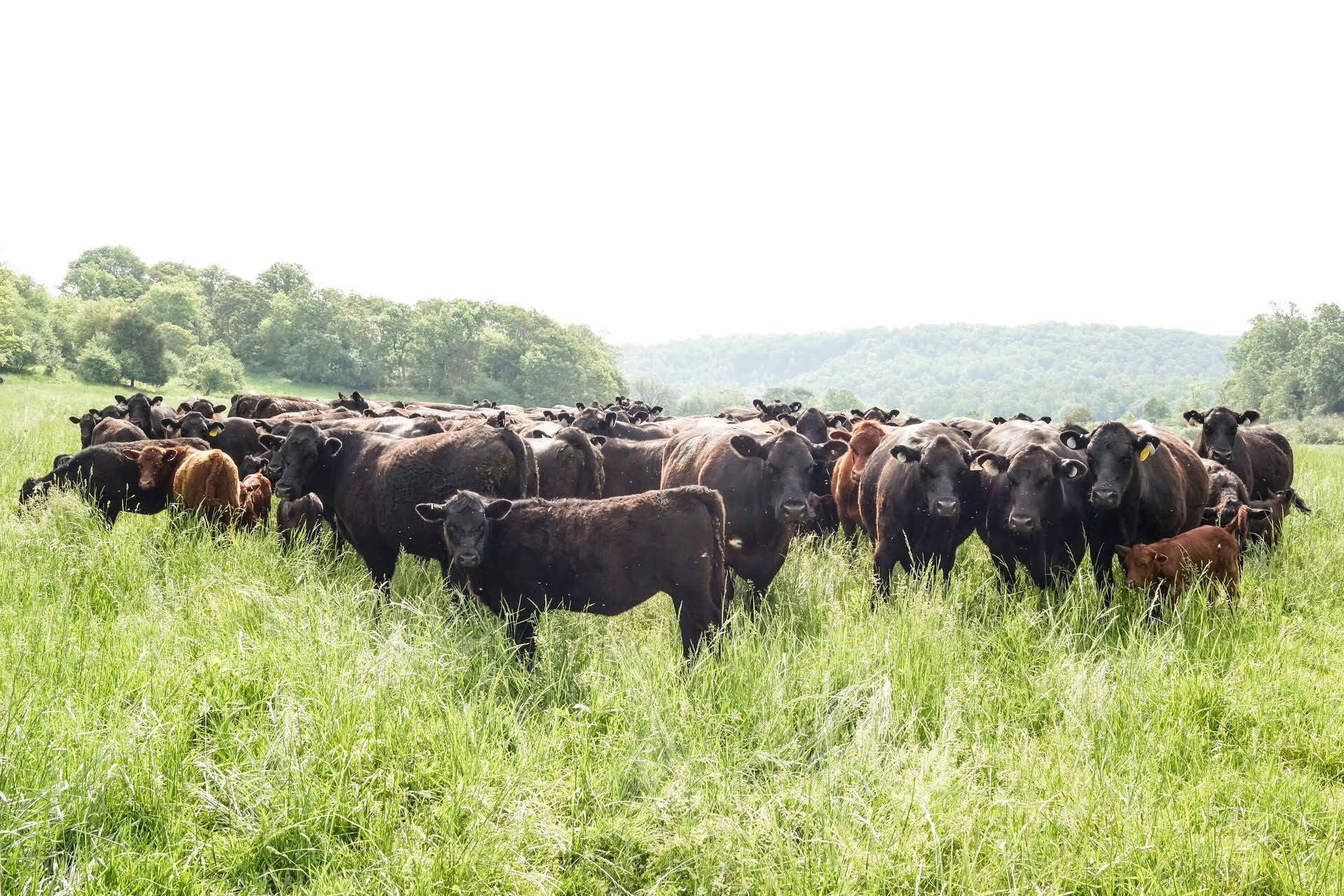 Grass-fed Angus cattle from a Seven Hills Food partner producer.
Grass-fed Angus cattle from a Seven Hills Food partner producer.
100% GRASS-FED
Ruminants like cattle and sheep have naturally evolved to eat grass, and 100% grass-fed or grass-fed, grass-finished animals eat grass for their entire lives. What they eat may be in the form of what they can find on pasture, like grasses and other wild plants, and dried fodder such as hay, depending on the season. 100% grass-fed meats are leaner than grain-fed, with higher concentrations of certain nutrients like vitamin B, fatty acids, and antioxidants like beta carotene – the stuff that makes carrots orange! You might notice it in the golden-yellow fat of grass-fed meat or the rich-colored yolks of pastured eggs.
GRASS-FED, GRAIN FINISHED
Grass-fed, grain-finished animals start off on grass and eat grains during the latter part of their lives, generally a few weeks before they are processed. Grains are safe for cattle if introduced slowly and provided in the right quantities, and they do enjoy eating it.
In some areas, it simply makes sense to supplement cattle’s diet with grain. For example, harsh winters can make it difficult for farmers to graze cattle on good pasture year-round and provide their animals with the calories they need to be healthy and produce quality meat or milk. Grain-finishing also increases the fat content, or marbling, of the beef and results in a milder flavor and juicier meat. 100% grass-fed beef is leaner, must be carefully cooked, and has a stronger flavor that may not appeal to all tastes.
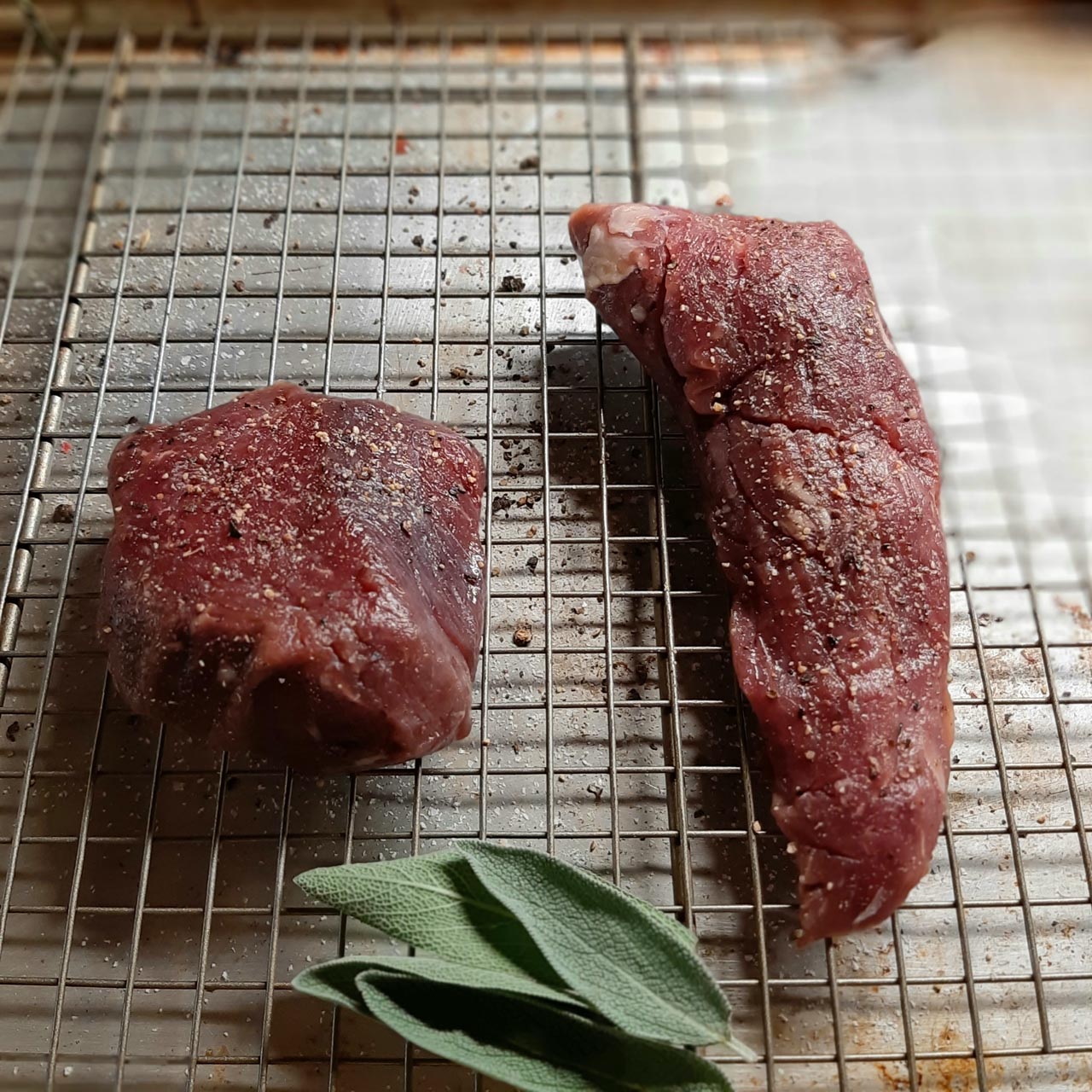
PASTURED & PASTURE-RAISED
This term describes pork, lamb, and poultry raised on pasture, or farmland. It may also be seen on egg cartons - more on egg labels here. Grazing animals dine on grasses, clover, alfalfa, and other wild vegetation, and may be given hay during the cold months. Pastured pigs forage for roots and other plant foods, and pastured chickens seek out insects and worms in addition to seeds and plants. Like grass-fed cattle, pastured animals may be rotated so they always have access to fresh grass. They may also have mobile shelters and portable fencing to protect them from predators.
Farms may also provide grain and other supplemental feeds to their animals, particularly in pork, poultry, and dairy operations. Pigs, chickens, and turkeys are omnivores and can’t survive on grass alone, and it can be difficult for a milking cow to produce enough milk when all her energy comes from grass alone. Likewise, chickens are given free choice grain feed, plus calcium for eggshell formation and grit to help their digestion.
Some farms even produce their animals’ additional feeds on-site. For example, our partners at Locksley Farmstead Cheese Co. (The Ag District) grow their own hay and feed their dairy cattle grape pomace left over from winemaking at their own Chrysalis Vineyard. This imparts unique flavors to their cheeses. Other cheesemakers may donate leftover whey to neighboring farms for feeding their pigs, and produce farmers may donate surplus vegetables as feed for neighboring farms.
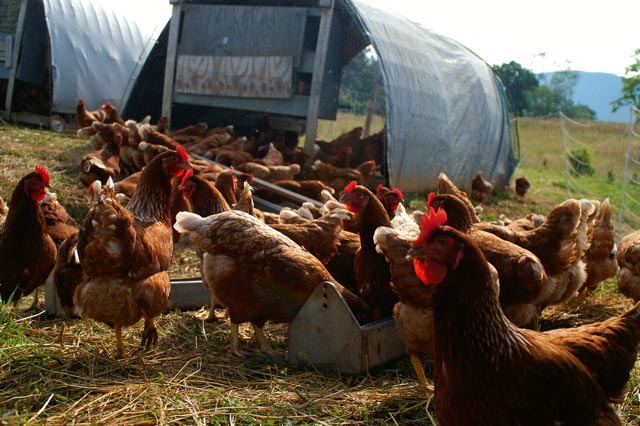 Pastured chickens at Radical Roots Farm, Keezletown, VA.
Pastured chickens at Radical Roots Farm, Keezletown, VA.
FORESTED
This term means the animals (typically pigs) were rotated through woodland during the latter part of their lives, where their diets included nutrient-dense food foraged on the forest floor like acorns, walnuts, apples, wild berries, and roots. The presence of forests on agricultural lands increases biodiversity and creates habitat for wild animals. Forested animals eat delicious, diverse foods, and they yield very flavorful meat. 4P Foods partners raising forested pork include Autumn Olive Farms and J&L Green Farm, making land unsuited for other types of agriculture both healthy and productive.
HERITAGE
In industrial-scale livestock farming, animals are bred for even temperament, fast weight gains, and large meat yield – and even conventional produce varieties are limited to what can withstand long travel and look good on a grocery store shelf. But just like there are generic tomatoes and heirloom tomatoes, there are unique livestock breeds from long ago that are in danger of disappearing. Raising these breeds for food is the best way to preserve them for future generations, and it is worth the effort and care because the meats of heritage livestock have unparalleled culinary qualities.
4P partner farms raising heritage animals include Autumn Olive Farms (AOF Berkabaw, Berkshire, and Ossabaw Island hogs; Patterson’s Heritage Beef), Double H Farm (Berkshire pigs), Ayrshire Farms (heritage cattle, hogs, and poultry), Firsthand Foods (heritage hogs and lamb), and Heritage Glen Farms (Kellybronze turkeys).
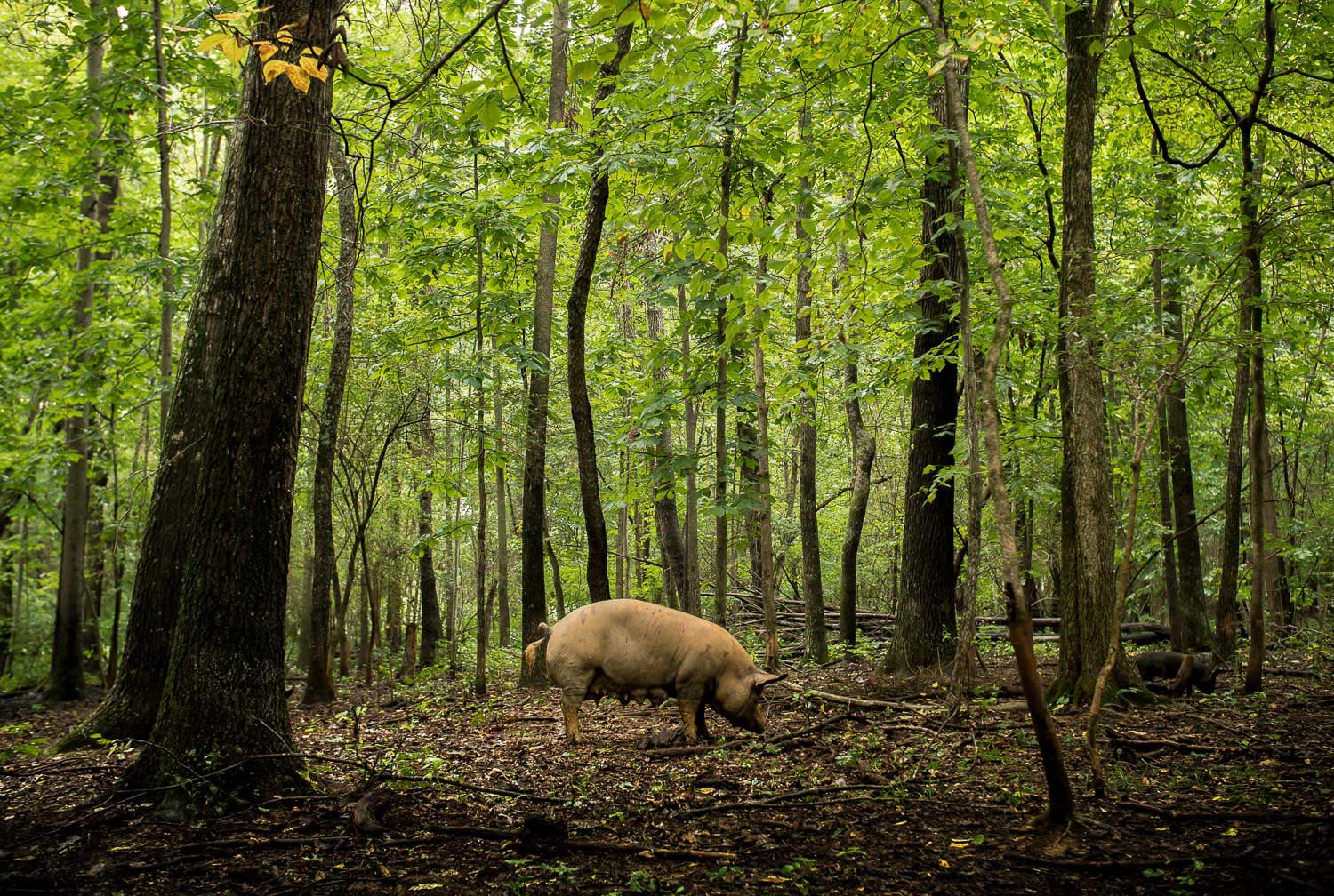
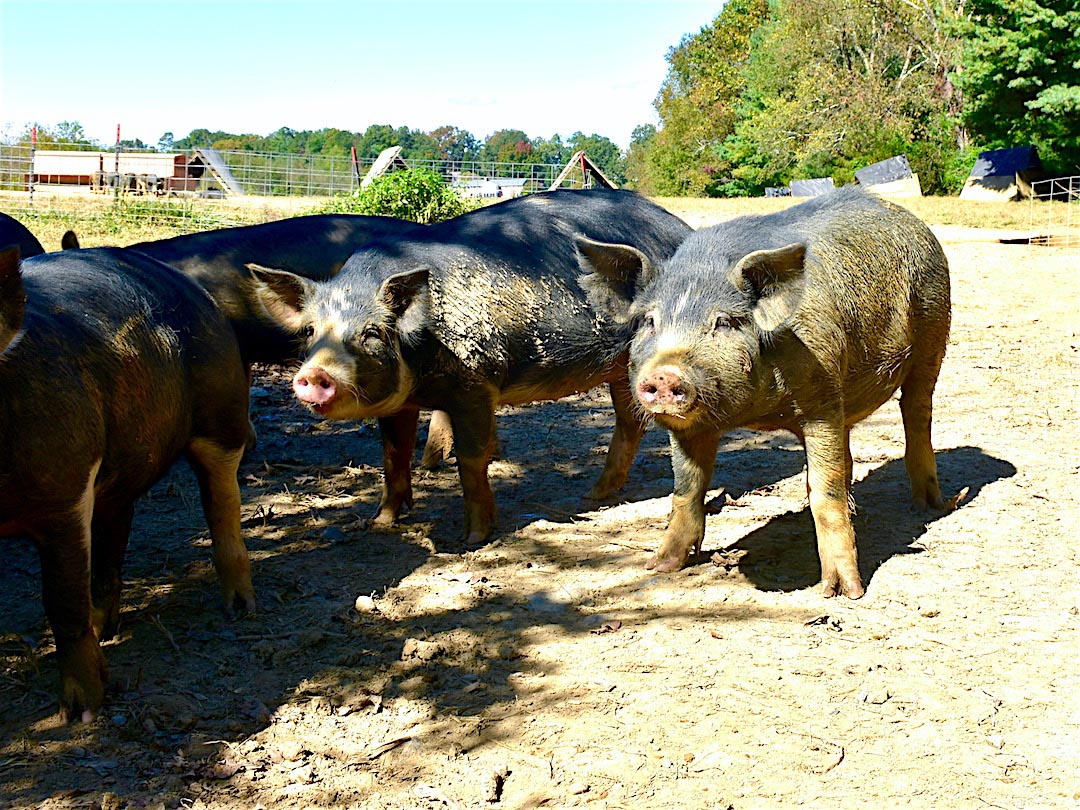 Pastured, forested heritage pigs at Autumn Olive Farms, Shenandoah Valley, VA.
Pastured, forested heritage pigs at Autumn Olive Farms, Shenandoah Valley, VA.
CERTIFIED HUMANE, ANIMAL WELFARE CERTIFIED, & AWA/ANIMAL WELFARE APPROVED BY AGW
These labels indicate certification granted by non-profit organizations dedicated to supporting food producers who treat their animals with care while having a positive impact on their community and environment. Each organization’s auditing programs ensure livestock farmers meet their standards of humane handling and sustainable practices. Auditors may inspect farms and facilities and oversee all aspects of production.
Our partner Firsthand Foods offers AWA (Animal Welfare Approved by AGW) lamb, and Shenandoah Valley Organics chicken is Certified Humane. Because there is a process behind it, many small producers may practice the same standards but have not obtained certification.
NON-GMO
This term applies to the animal’s feed. GMO stands for “genetically modified organism” and these organisms’ genetic material has been artificially manipulated in a laboratory with genetic engineering. In agriculture, 80% of GMO crops are designed to tolerate herbicides like glyphosate. There are growing concerns over the impact of GMOs on the environment and human and animal health.
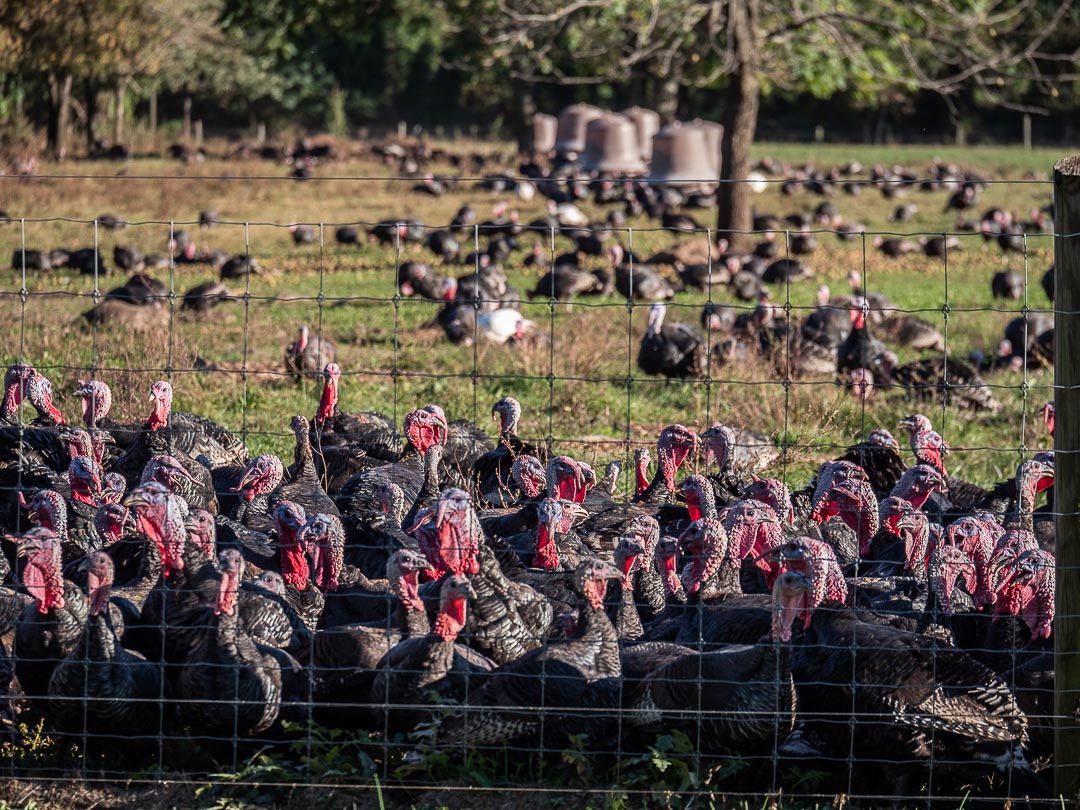 Pastured heritage Kellybronze turkeys at Heritage Glen Farm, Crozet, VA.
Pastured heritage Kellybronze turkeys at Heritage Glen Farm, Crozet, VA.
CERTIFIED ORGANIC
Certified Organic labels may be found on many types of meat, including Shenandoah Valley Organics chicken. This also refers to the animals’ feed, which is guaranteed to be free from synthetic fertilizers, chemicals, pesticides, irradiation, or genetic modification. The official organic certification is a lengthy process and many small-scale producers may practice organic methods without obtaining this certification.
NO ANTIBIOTICS, HORMONES, OR GROWTH PROMOTERS
The meats sourced by 4P Foods are free of antibiotics and growth hormones. While the US banned the use of antibiotics to enhance the growth of livestock in 2017, low doses of antibiotics are administered in the feed of factory-farmed animals to prevent disease resulting from their poor living conditions. Beef cattle, dairy cattle, and sheep may still be given certain hormones to make them grow faster and larger or produce more milk. The impacts of these substances on human health are still being researched, but there is concern over possible health risks due to the feeding of antibiotics and hormones to livestock.
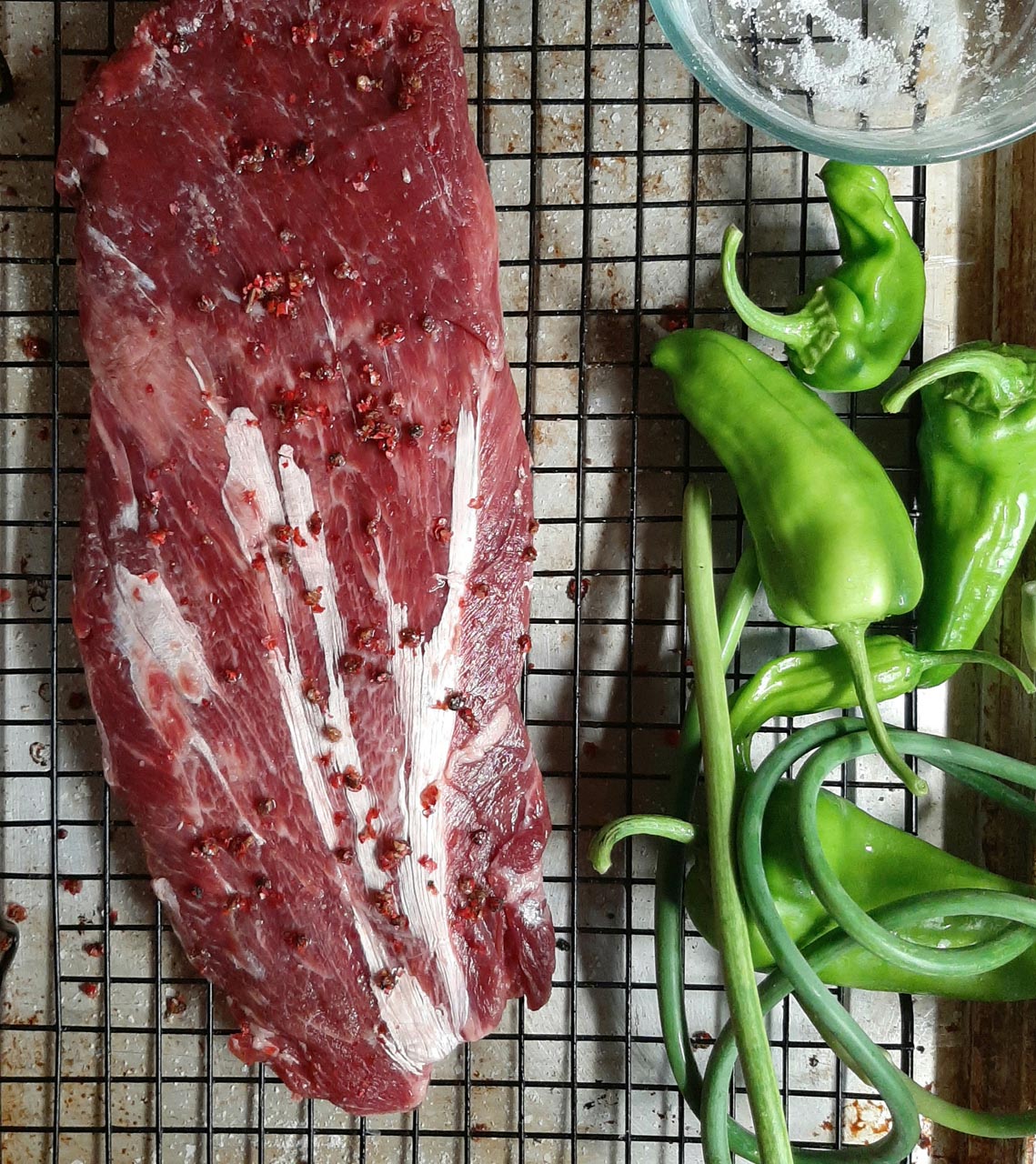
DRY-AGED
Dry aging is an ancient preparation method in which meat is hung in a dry, cool location for a week or more. This helps preserve the meat as moisture is reduced, and enhances its flavor. Generally, poultry carcasses are immersed in water to rapidly chill them after harvest. This results in retained water in the meat, which translates to longer cooking time. But dry-aging, practiced by our partners at Heritage Glen Farms, results in a bird with superior flavor that can be cooked in half the time.
Cover photo: Pastured turkeys at J&L Green Farm, Edinburg, VA.
REFERENCES
Diet And Disease In Cattle: High-Grain Feed May Promote Illness and Harmful Bacteria
A review of fatty acid profiles and antioxidant content in grass-fed and grain-fed beef
How to Cook the Perfect, Tender, Grass Fed Steak
AWA (Animal Welfare Approved) by A Greener World
Certified Humane Raised & Handled – Humane Farm Animal Care
Animal Welfare Certified – Global Animal Partnership
Organic 101: What the USDA Organic Label Means
U.S. bans antibiotics use for enhancing growth in livestock
Antibiotics in Our Food System
The way some meat producers fatten up cattle is more bizarre than you might think
Hormones in Dairy Foods and Their Impact on Public Health